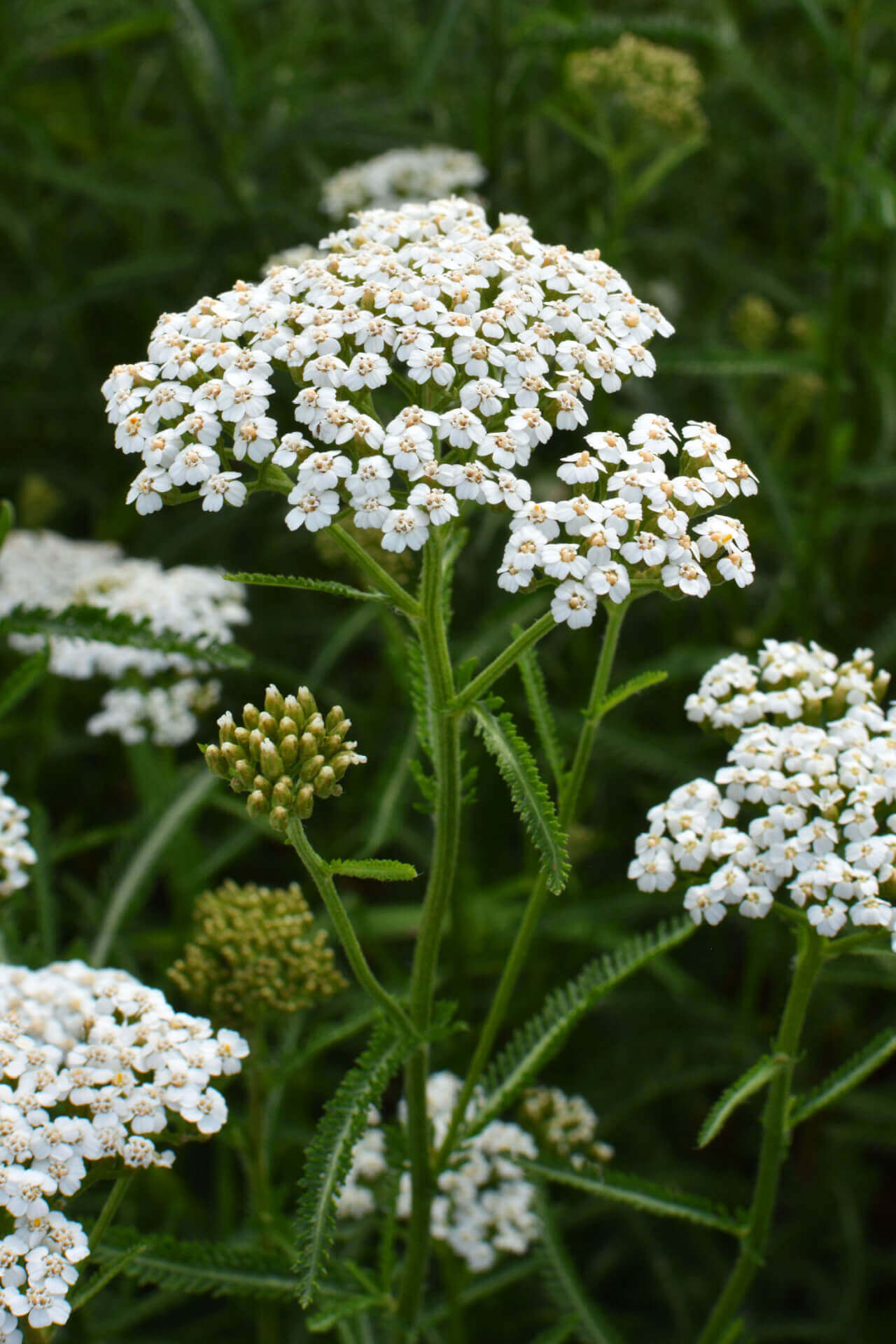Yarrow Plants for Sale
Yarrow (Achillea millefolium) is an herbaceous perennial with lofty white flowers that add a touch of airiness and height, and feathery green leaves that give your garden plenty of texture. Plant the yarrow flower in your border, cottage garden, meadow garden, or pollinator or butterfly garden.
This plant is a versatile choice that will add height and unique texture to your garden. Plant it with Verbena, Bee Balm, and Coneflower to add layers and create both depth and airiness in your garden beds.
Achillea Plant Details
Family: Asteraceae
Light Requirement: Full Sun
Water Needs: Moderate
Height: 3 ft.
Spread: 1 – 3 ft.
Growth Rate: Fast
Bloom Time: Summer
Flower Color: White
Wildlife Value: Attracts bees and butterflies
Landscape Uses and Maintenance
Yarrow is a perennial with tufts of white, fragrant flowers that add a whimsical, gentle beauty to the garden.
This plant grows best when planted in full sun but can tolerate partial shade. For consistent and vigorous blooms, ensure it is planted in an area with full sun. Do not plant in full shade.
Yarrow is a considerably hardy plant that is easily propagated. It has a long bloom period, and the season is extended by its seedheads, which stay until eaten by birds. Leave the stems standing through the fall. You can leave the seeds to self-sow and also divide the plant once it is firmly established and spreading. Always divide during the spring when the plant is dormant.
Noteworthy Characteristics
This is a favorite pollinator plant. Yarrow is the host plant for many beloved pollinators and will attract bees and butterflies to your garden. Other varieties of this plant have red, yellow, or pink flowers. Collect them all to create a stunning rainbow effect in your garden.
Exposure
Yarrow flourishes in complete sun, needing at least six hours of direct sunlight daily. It can tolerate light shade, but optimal blooming and growth occur with more sunlight. Well-drained soil and ample sunlight ensure Yarrow's best performance.
Height at Maturity
Over 12"
Usage
Pollinator Plant
Shipped As
Bare-root
Ships
USPS
Planting Zones
3-9




